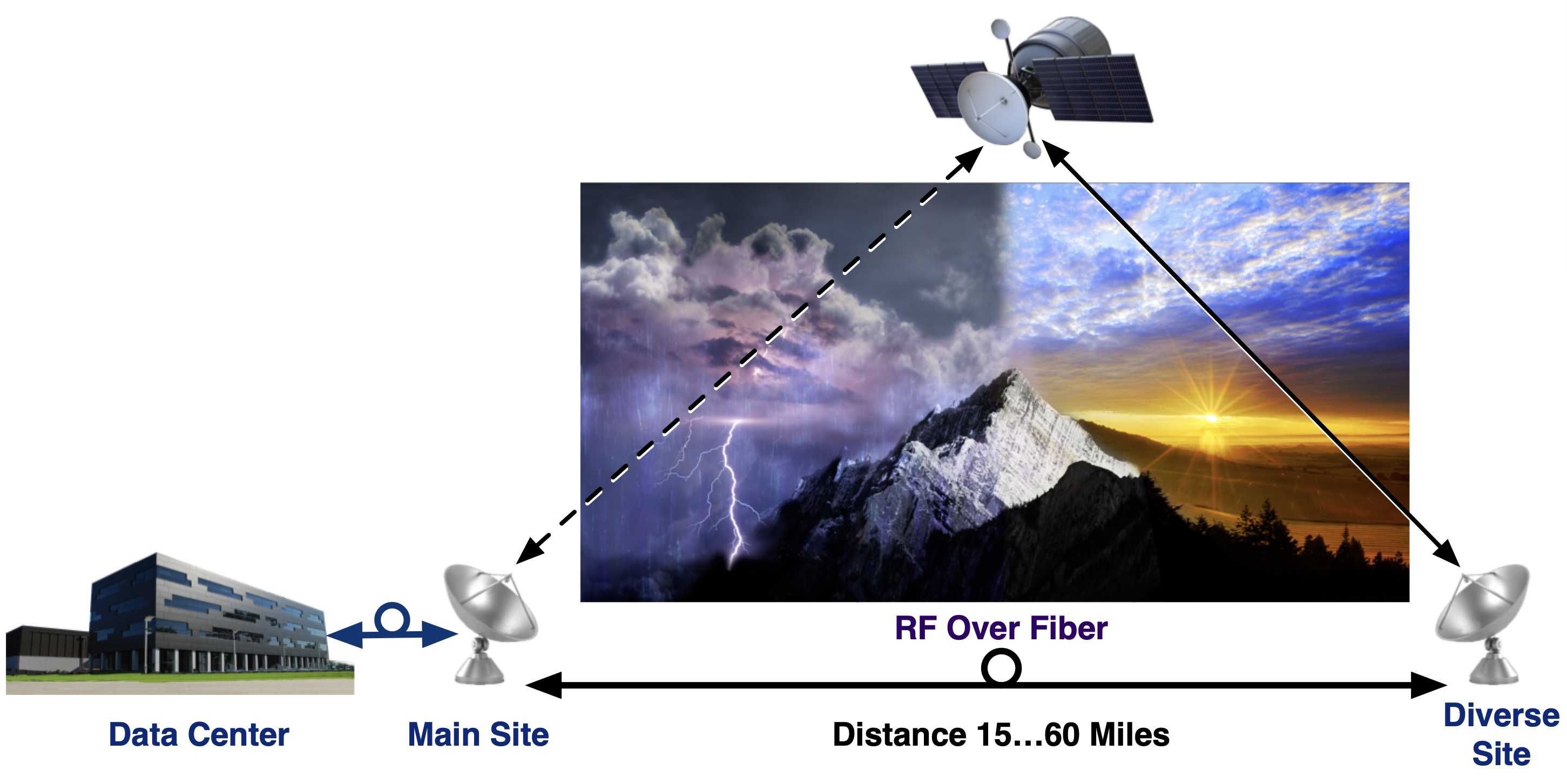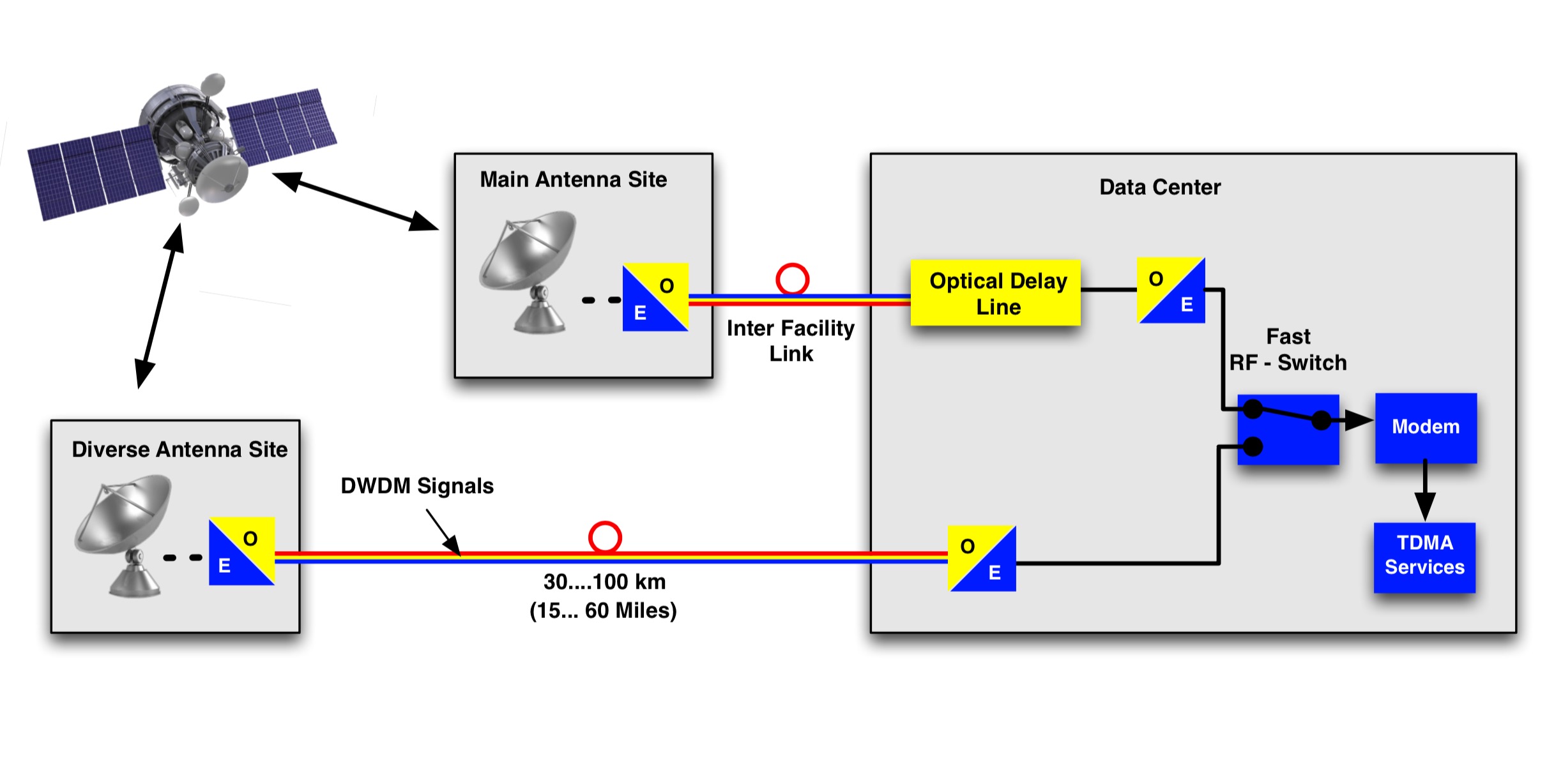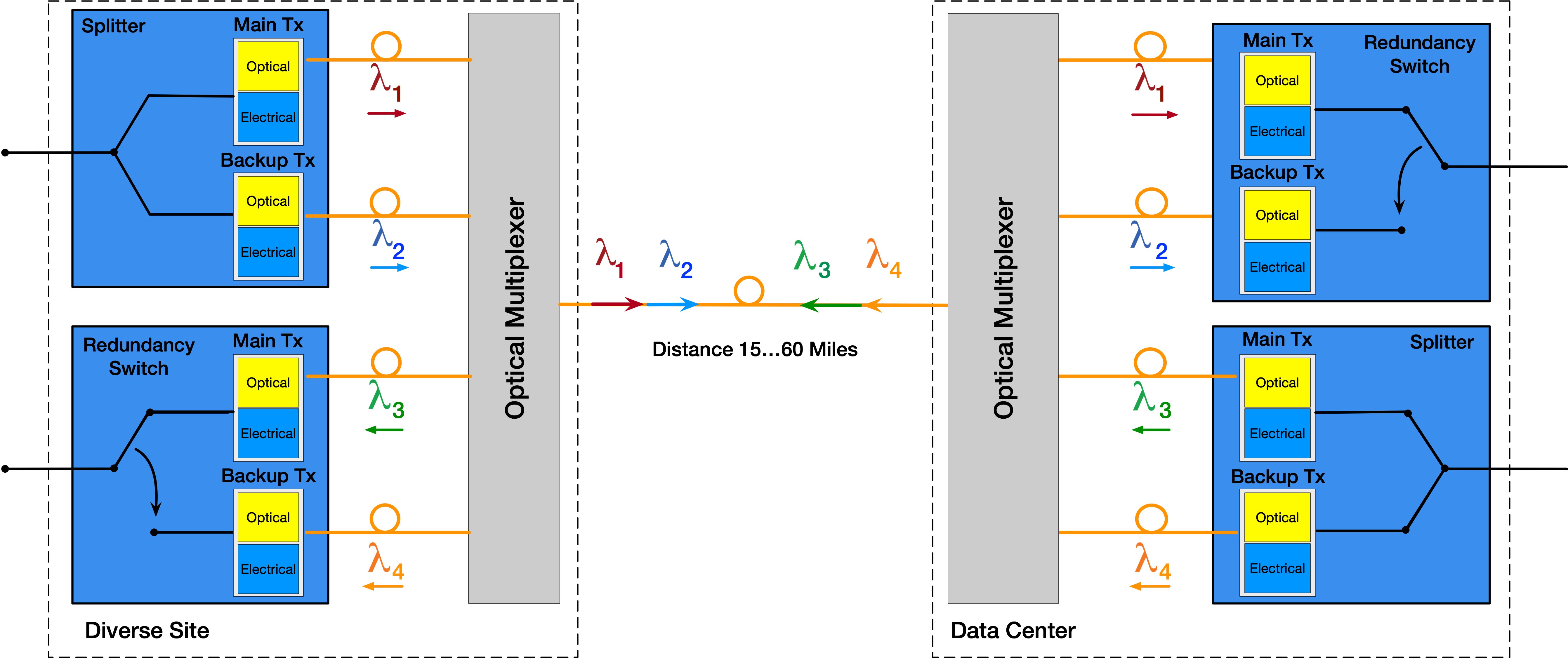High Throughput Satellites (HTS) that provide the highest data rates are operated on the Ka-band. Transmission quality on Ka-band frequencies is heavily dependent on weather conditions, as rain or snow can severely attenuate the signal, and secondary remote sites are often used to mitigate these effects. In Ka-band site diversity configurations signal transmission is redirected from the main site to a diverse site in case of adverse weather conditions. These site diversity configurations, which rely on DWDM RF-over-Fiber transmission systems and redundancy switching units, are the best-suited solutions and ensure maximum system reliability and availability
RF Over Fiber:
Ka-Band transmission is severely degraded by adverse weather conditions. In particular atmospheric losses due to rainfall can exceed 30dB for Ka-band satellite transmission systems.

Ka Band Transmission:
Satellite communications commonly use C-Band and Ku-Band transmission frequencies. As orbital positions become highly congested bandwidth is added by using under-utilized frequency bands.

Ka-Band Site Diversity
Detailed view of bi-directional Ka-Band Site Diversity configuration including equipment redundancy.

